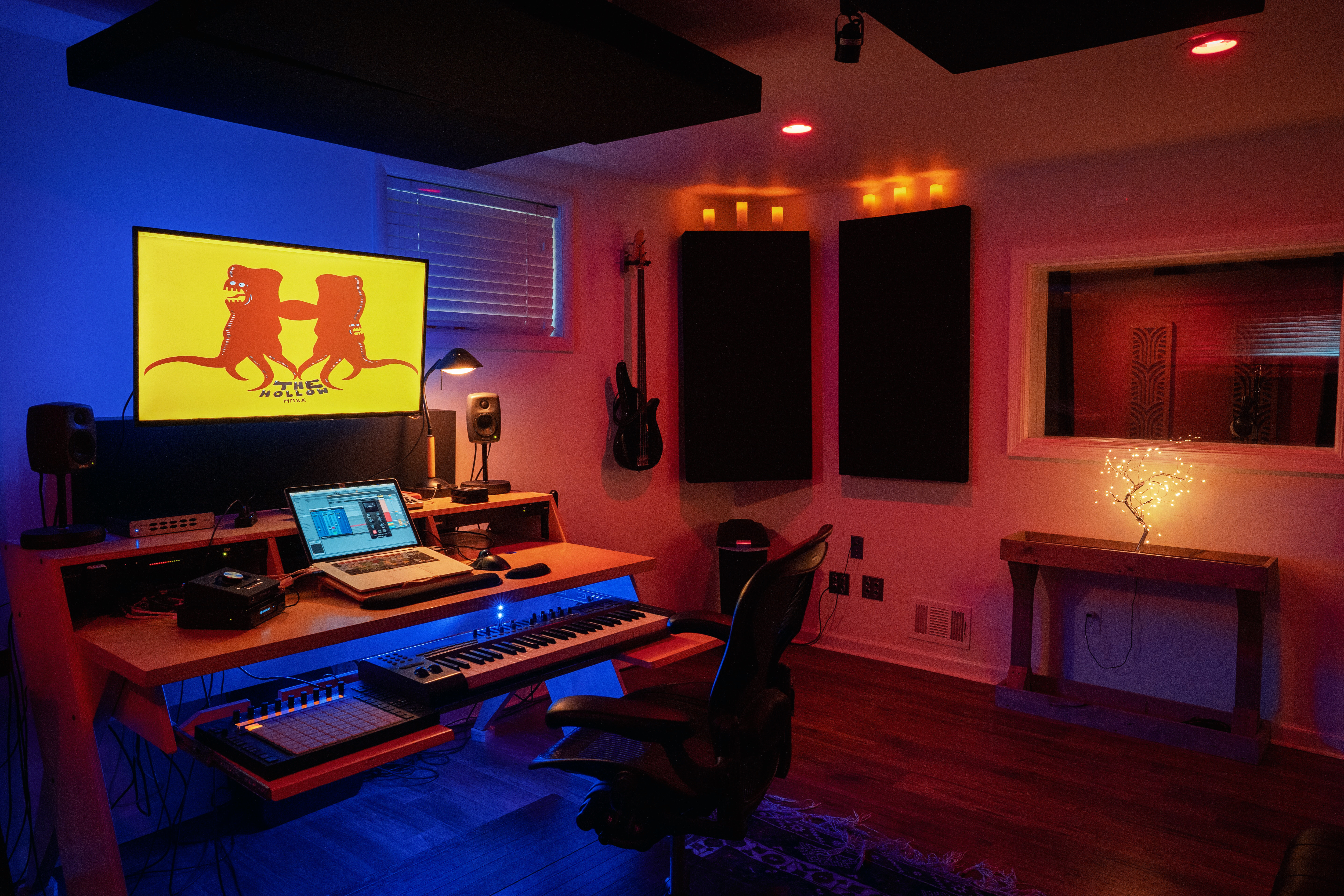Crafting Sonic Sanctuaries: The Art of Recording Studio Design
Welcome to The Hollow Recording Studio, where every sound is sculpted with precision and passion. In this blog, we embark on a journey into the intricate world of recording studio design, exploring the principles of acoustics, room treatment, isolation, and speaker placement. Whether you're setting up a professional studio or optimizing your home recording space, our expert guidance will help you create a sonic sanctuary where creativity flourishes and music comes to life.
Understanding Acoustics:
Acoustics play a pivotal role in shaping the sound quality and character of a recording space. Here's what you need to know about acoustics in recording studio design:
Reflections and Absorption: Understand the balance between reflections and absorption to achieve a natural and balanced sound. Strategically place acoustic panels, diffusers, and bass traps to control reflections and minimize standing waves.
Room Modes: Identify and address room modes, which are resonant frequencies that can cause uneven frequency response and coloration in recordings. Use bass traps and strategic speaker placement to mitigate room modes and achieve a more accurate listening environment.
Room Treatment Techniques:
Effective room treatment is essential for optimizing recording spaces and ensuring accurate monitoring and mixing. Here are some key techniques for room treatment:
Bass Traps: Install bass traps in corners and along wall-ceiling junctions to absorb low-frequency energy and reduce bass buildup. Opt for broadband traps that target a wide range of frequencies for optimal results.
Acoustic Panels: Place acoustic panels at first reflection points to minimize early reflections and improve clarity and imaging in the listening environment. Consider diffusive panels to scatter sound and create a sense of spaciousness without overly deadening the room.
Isolation and Soundproofing:
Isolation and soundproofing are essential for maintaining privacy, minimizing external noise, and preventing sound leakage. Here's how to ensure effective isolation in your recording space:
Decoupling: Decouple walls, floors, and ceilings to prevent sound transmission through structural vibrations. Use resilient channels, acoustic mats, and specialized isolation mounts to isolate the recording space from the surrounding structure.
Double-Wall Construction: Consider double-wall construction with an air gap between walls to enhance soundproofing and isolate the recording space from external noise sources.
Optimal Speaker Placement:
Speaker placement is critical for achieving accurate monitoring and translation of mixes. Follow these guidelines for optimal speaker placement in your recording studio:
Equilateral Triangle Setup: Position your speakers and listening position in an equilateral triangle, with the speakers forming the base and the listener at the apex. This ensures a balanced stereo image and accurate stereo imaging.
Symmetrical Arrangement: Maintain symmetry in speaker placement and room layout to minimize asymmetrical reflections and phase cancellation issues.
Conclusion:
Recording studio design is both an art and a science, requiring careful consideration of acoustics, room treatment, isolation, and speaker placement. By understanding the principles of studio design and implementing effective techniques, you can create a recording space that fosters creativity, enhances sound quality, and inspires musical excellence. At The Hollow Recording Studio, we're here to guide you through every step of the design process, helping you craft a sonic sanctuary where your musical vision can thrive. Reach out to us today to learn more about our studio design services and take your recordings to the next level.
